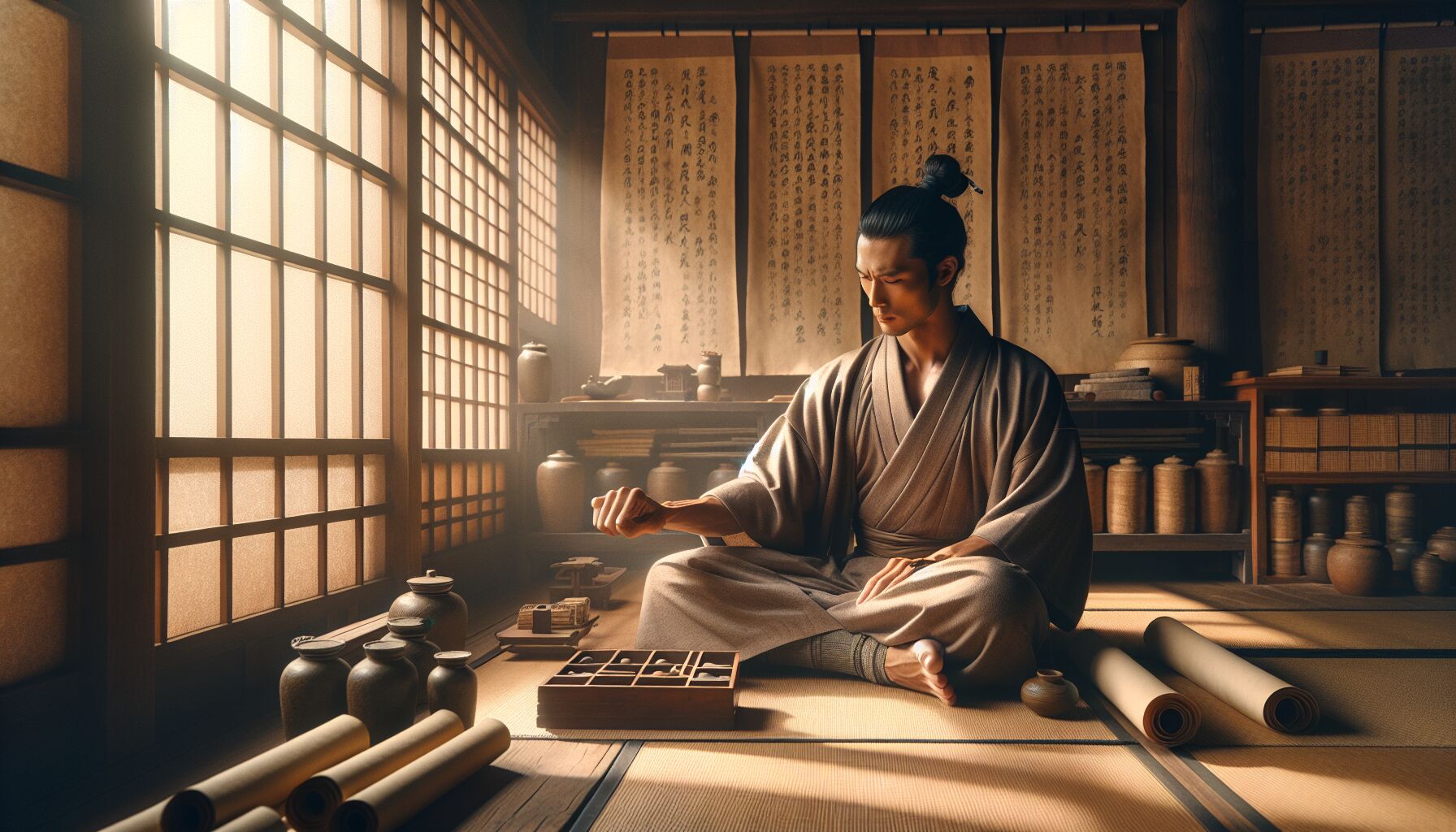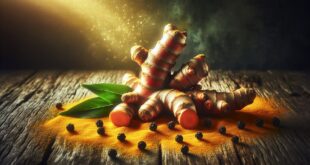 Back when battles were settled with steel and strategy, not screens and signatures, Samurai health wasn’t just about brute strength or swordsmanship. It was a system. A way of life. Beneath the polished armor and fierce discipline was a foundation rooted in traditional healing — principles inherited and adapted from classical Chinese medicine and reborn as what we now call Kampo medicine.
Back when battles were settled with steel and strategy, not screens and signatures, Samurai health wasn’t just about brute strength or swordsmanship. It was a system. A way of life. Beneath the polished armor and fierce discipline was a foundation rooted in traditional healing — principles inherited and adapted from classical Chinese medicine and reborn as what we now call Kampo medicine.
Kampo isn’t a catch-all folk remedy. It’s precise, layered, and deeply personal. When it landed on Japanese soil around the fifth or sixth century, it started evolving immediately. Japanese thinkers didn’t just copy Chinese text — they tuned it like a craftsman sharpening a blade. The result? A highly localized system attuned to the land, the people, and their way of perceiving wellness and dis-ease.
The real turning point came during the Edo period (1603–1868). With relative peace under the Tokugawa regime, the elite Samurai class took an even deeper interest in maintaining resilience not only on the battlefield but off it. Swordsmanship might win a moment — but steady nerves, clear judgment, and a strong gut often won the bigger game. Kampo medicine gave them tools to observe, adjust, and restore.
There’s something humbling about how observational this medicine is. A skilled Kampo practitioner doesn’t just know which formula to use — they consider rhythm, complexion, voice tone, even how someone sleeps. Diagnosis isn’t about identifying symptoms as isolated problems to be “fixed.” It’s about locating imbalance through patterns of excess and deficiency — fire rising, or water stagnating, liver Qi repressing, or spleen dampness accumulating. To the Samurai, this meant catching disharmony before it turned into weakness. And if that’s not practical medicine, I don’t know what is.
“He who knows others is wise. He who knows himself is enlightened.” — Laozi
During the Kamakura and Muromachi periods, physicians like Tashiro Sanki and Manase Dōsan started codifying these principles, making them more approachable for Japan’s unique climate and constitution. We’re talking humid summers, rice-heavy diets, and a cultural tendency toward emotional reserve. All of that shaped Kampo’s emphasis on digestive vitality, warmth in the lower abdomen (known as the hara), and regulating internal flow rather than pushing immediate resolution.
What’s fascinating is how this tradition survived alongside — even through — the waves of Westernization that hit Japan after the Meiji Restoration. While school medicine adopted European methods, Kampo remained part of the collective memory, passed down through apprenticeships, temple records, and quiet family clinics. Unlike many healing systems washed away by modernization, Kampo held onto something rare: subtlety.
That subtlety is hard-earned. While Western doctors sliced, radiated, and prescribed, Kampo held its ground with diagnostics reliant on feeling pulses and observing heat signatures. It wasn’t faster. It wasn’t always easier. But it asked one crucial question that industrial medicine often skipped: “What’s the nature of this person’s imbalance?” Not just the illness, but the pattern behind it.
Kampo’s pharmacopoeia opened up another doorway. Herbs like keihi (cinnamon twig), shōsaikoto (minor bupleurum formula), or kakkonto (kudzu root decoction) weren’t just active ingredients — they were stories. Stories about the body’s response to cold wind, sluggish digestion, or emotional burden carried too long in the chest.
“A people without the knowledge of their past history, origin and culture is like a tree without roots.” — Marcus Garvey
Which brings us back to the Samurai. These weren’t men prone to excess sentiment. They measured their days and considered the impermanence of everything. To them, Kampo wasn’t sentimental herbalism — it was tactical resilience. If your liver was stuck, your decision-making dulled. If your gallbladder fire surged, you’d lash out. Physiological subtlety meant literal survival.
And even today, folks who farm their own land, raise their own animals, or live off-grid often find a strange kinship with Kampo. Its rhythms fit the cycles of the earth. Its formulas don’t shout. They nudge, harmonize, and bring clarity — so the body can remember what balance feels like.
This kind of medicine belongs to those willing to slow down and listen. And not just to the body, but to the lineage that carried it forward. Because when it comes to traditional healing, forgetting where it came from is a sure way to miss where it’s meant to go.
Herbal formulations used by samurai
The average Samurai didn’t wait for crisis to strike before reaching for a solution. He trained his body, refined his mind, and, just as critically, nourished his internal terrain with precision. This is where Kampo medicine wasn’t just theory — it became companion. Think of it like a sword that could cleanse the body rather than cut flesh. Every formula had purpose. Timing, dosage, and method of preparation mattered, sometimes as much as the ingredients themselves. These weren’t pantry herbs casually brewed into tea — they were pharmacological tools shaped by centuries of doctrine and direct experience.
One of the most iconic formulas linked to Samurai health was kakkonto — a warm, invigorating blend centered on kudzu root. Originally used to fend off the early stages of cold and flu, warriors relied on it to break fevers without pushing the body into further shock. When you’re sleeping under armor, exposed to raw mountain winds, or recovering from injury in a damp fortress, those “minor chills” could become serious fast. Kakkonto was known to push that cold back out — through the skin, via mild sweating, without weakening the core. Not too aggressive, not too gentle. Like any good strategy.
Then there was shosaikoto — the minor bupleurum decoction. This formula was particularly clever. It worked in the shaoyang layer of the body, that zone between interior and exterior where problems tend to linger unresolved. Warriors often called upon this when tension got stuck — physically, emotionally, or both. Think alternating fever and chills, bitter taste in the mouth, rib-side discomfort. Sound familiar? That “on edge” feeling modern folks carry daily. Shosaikoto gently released that stuck-ness, helping resolve what the body couldn’t quite shake.
Another deeply respected tonic was jinpi-to — a digestive formula used when the gut grew sluggish, bloated, or cold after emotional strain or poor-grade rations. This wasn’t about IBS or reflux — the language didn’t exist like that. But chronic indigestion marked by fatigue, foggy mind, and a pale tongue told Kampo practitioners that qi was collapsing in the lower burner. So they’d warm, tonify, and awaken digestion — often using a mix of dried ginger, ginseng, and citrus peel. The result wasn’t fireworks — it was steadiness. And Samurai, more than most, prized steadiness over thrill.
Let’s not forget the often-unspoken herbal ally: saishin, or Asarum sieboldii. Subtle yet powerful, it was used sparingly due to its toxicity in high doses. But when applied correctly, it helped open the nasal passages, promote sweating, and energize the meridians. Especially useful at high altitudes or damp terrain, it’s a perfect example of how Kampo balanced potency with restraint. That kind of restraint — knowing when “more” would be too much — feels almost foreign in our extract-obsessed supplement scene.
“It is not the man who has too little, but the man who craves more, that is poor.” — Seneca
What modern readers often overlook is how deeply these warriors trusted the rhythms of their own body. If they were tired, it didn’t mean powering through with stimulants. It meant assessing — was cold invading the kidneys? Was blood insufficient to nourish the muscles? They didn’t pathologize fatigue; they explored it. Because in their world, a body out of alignment meant a blade would fall short, a plan would unravel, or a comrade would be lost.
Beyond the formulas themselves, the Samurai approach to traditional healing held a quiet reverence — for nature’s intelligence, for restrained action, and for long-term outcomes. They weren’t bathing in broths or throwing back tinctures for quick recovery; they were layering herbs like tactics — each played at the right moment, with the right intention.
Interestingly, many began their mornings not with food, but with warm ginger decoctions or infused teas designed to stir circulation. Think of it like spiritual calisthenics — warming not just the muscles, but the meridian pathways too. The logic is simple: if the blood and qi are flowing, decision-making improves, reflexes respond more intuitively, and emotions settle into clarity. Isn’t that the kind of daily energy we’re all quietly craving?
For those exploring Kampo medicine now — whether you live off-grid or just wish you could — it’s worth remembering that formulas weren’t used interchangeably. They were diagnosed formulas. That meant knowing your constitution. Are you dry or damp? Slow or wiry? Does your pulse hold tension like a bowstring or dissolve like a fading echo? These things mattered. They still do. And while modern practitioners might use tongue maps and infrared tech, the underlying principle stands: the body knows — if you’re willing to listen.
There’s no shortcut to that kind of awareness. It has to be practiced, refined, and sometimes wrestled with. But each formula handed down holds a kind of encoded wisdom — not just from the plants, but from the people who dared to live by their rhythms. People who, sword drawn or not, knew that real strength starts from within.
If you’re curious to explore these formulas through modern clinical frameworks, resources like the National Center for Biotechnology Information and Japan’s own Pharmacopoeia database have fascinating entries tracing their evolution. But don’t get lost in data at the cost of lived rhythm. Remember: the Samurai didn’t take supplements — they followed cycles.
And in a way, so can we.
Modern applications and integration with Western medicine
Today, Kampo medicine isn’t some dusty relic behind a museum glass—it’s still being practiced, taught, and, yes, even reimbursed under Japan’s national health insurance system. That’s wild when you think about how many traditional systems around the world were overwritten or sidelined by industrial-era thinking. But here’s the thing: Kampo wasn’t just preserved—it grew, changed, and found cracks in the modern infrastructure where ancient wisdom could seep back in.
Walk into a hospital in Tokyo or Osaka and you might bump into a board-certified physician who prescribes both amoxicillin and shosaikoto, depending on what your body is actually asking for. Over 140 Kampo formulas are recognized in Japan’s official pharmacopeia. These aren’t alternatives—they’re integrated. A gastroenterologist might supplement proton pump inhibitors with rikkunshito to help bolster digestive energy. An oncologist may use juzentaihoto, a qi- and blood-tonifying formula, to support patients going through chemotherapy. It’s not mystical—it’s functional.
You know what else is remarkable? These docs don’t see Kampo as “old-fashioned.” They see it as another blade in the toolkit. One that works on different timelines and mechanisms, sure—but one that often succeeds where reductionist methods fall short. Western medicine does surgery and trauma like nobody else. But the gray zones—chronic fatigue, poor appetite, emotional stagnation, vague inflammation—that’s where Kampo can whisper what EKGs and lab panels sometimes miss.
“Not everything that counts can be counted, and not everything that can be counted counts.” — Albert Einstein
And for folks who’ve felt dismissed or misread by cold, impersonal diagnostics, Kampo offers a breath of recognition. The practitioner looks at your tongue, feels your pulse, listens to your voice—and you start to feel seen in a way that sterile protocols rarely manage. That’s not just good bedside manner. That’s diagnostic intimacy. It’s also part of the reason this blend of old and new is thriving in clinics worldwide—from Japan to Germany to parts of the U.S., especially in integrative and naturopathic settings.
Of course, the path isn’t without turbulence. Western science still struggles with the idea that a single formula can treat different individuals differently—or that subjective signs (like “a sense of fullness under the ribs”) matter as much as biomarkers. But efforts are building. The NCBI has published dozens of studies investigating Kampo herbs’ mechanisms—anti-inflammatory pathways, digestive enzymes modulation, even nervous system balancing.
It’s not about proving spirit through science. It’s about translating lived traditional healing into modern language—so it can be respected, not reduced.
Some researchers call it “pattern-based medicine.” Others call it “systems biology.” But what they’re circling around is something practitioners of Kampo—and Native American healers, and African herbalists, and grandmothers who studied calendars not clocks—have known for generations: the body isn’t broken into parts. It’s a living field. If your gut is off, your mood shifts. If your liver qi is stagnant, your sleep suffers. It’s all connected. Always has been.
So, how do you bridge centuries? Carefully.
In Japan, med schools now include Kampo in their core curriculum. Companies like Tsumura, one of the biggest Kampo pharmaceutical manufacturers, have standardized formulas down to their granule. And yet, traditionalists still insist on decocting raw herbs in clay pots—because they believe medicine is made not just by boiling, but by attention, presence, and slow heat.
Both models have value. One offers consistency across large populations. The other adapts to the soul sitting across from you. Maybe we need both. Maybe Samurai health wasn’t just about strength and steel—but precision and discernment that still echo today.
For folks looking to experience Kampo in their own lives, there are a few ways to begin—not as consumers, but as participants:
- Find a qualified Kampo practitioner who practices pattern-based diagnosis, not generic prescriptions.
- Start observing your own rhythms—when do you feel warm, cold, tense, or foggy? What foods ground or scatter you?
- Look into commonly used formulas like kakkonto or shosaikoto—review their traditional indications before trying anything.
The key is relationship. Not formula-hunting like a shopper, but engaging like a student of self.
And this isn’t just theory—modern life’s rhythm often mimics the chaos of battle more than we care to admit. Pick any weekday and see for yourself. There’s traffic, alerts, noise, tension crammed into joints and guts. But like Kampo practitioners of old, we can learn to read our internal terrain, not just respond to flare-ups. Patterns matter. Resilience emerges not from suppression, but adjustment.
So whether you’re navigating chronic fatigue, low-grade anxiety, or just trying to sharpen your instincts, Kampo offers more than pills. It offers perception. A way of seeing the body—not as a flawed machine, but as a weather system with shifting winds and seasons.
And the work, as always, is to listen. Because traditional healing doesn’t just survive by being remembered—it lives when we live it.
 DS Haven In Light Of Things
DS Haven In Light Of Things






